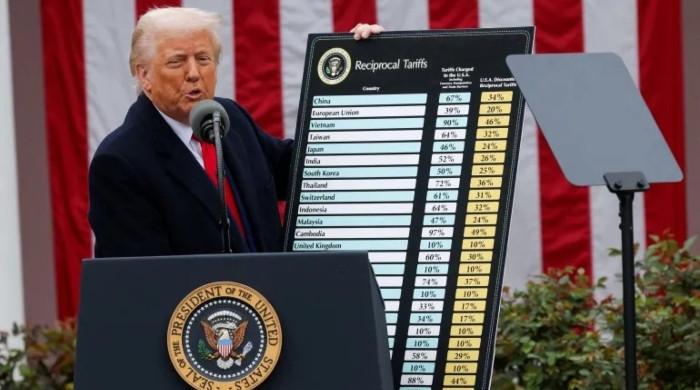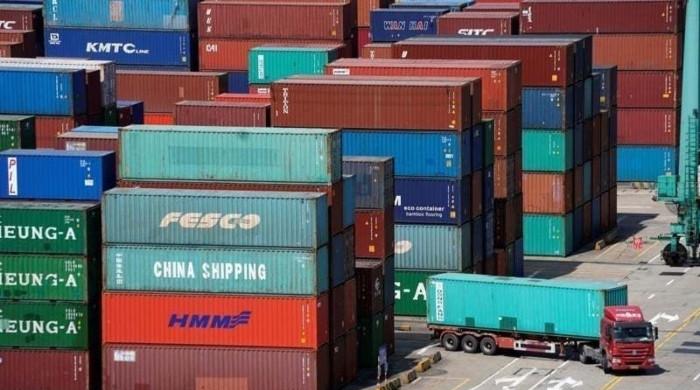Inclusive cities
Street vending plays a significant role in creating employment and providing subsistence income to the urban poor
July 06, 2022

The Haque model of inclusive cities advocated that cities should provide livelihood opportunities to all segments of society. Inclusive cities ensure all residents, including the poor urban working class, have equal rights to participate in the economic activities of the cities.
Street vendors – micro-entrepreneurs – are an integral part of inclusive cities. Street vending plays a significant role in creating employment and providing subsistence income to the urban poor. Global estimates provided by Sirkeci (2020) in his study titled ‘Actors and Functions of Street Economy’ have shown that the street economy has grown exponentially, affecting the daily life of five billion people, with a volume of $30 trillion.
Haque introduced the concept of street vending and its importance in Pakistan. Pakistan has a large street economy operated by individuals and micro-enterprises, across the country, mostly in urban areas. The street economy strongly links with a supply chain comprising formal and informal players. Despite enormous importance, the socio-economic profiling of street vendors is relatively unknown in Pakistan.
The Pakistan Institute of Development Economics (PIDE) funded a research study titled ‘The Street Economy in Twin Cities: an Economic Analysis’ through a competitive grants programme, Research for Social Transformation and Advancement’ (RASTA). The study provides valuable insights into the socio-economic conditions of the street vendors operating in the twin cities of Islamabad and Rawalpindi.
On average, 1.5-2.5 per cent of the population is engaged in the street economy in the twin cities. Both cities operate under different administrative structures. Markets are relatively well organized in Islamabad compared to Rawalpindi. Furthermore, Islamabad hosts relatively high- and middle-income families, while low- and middle-income families reside in Rawalpindi.
The average age of street vendors is 32.9 years, and among them, 75 per cent of street vendors are married. Lack of education is one of the key determinants of adopting informal businesses such as street vending. Among surveyed street vendors, around 24 per cent have no formal education, 21 per cent have below primary education, 44 per cent have up to 10 years of education, and 11 per cent have intermediate and above education. These statistics suggest that most street vendors have low education and less chance of getting a job in formal sectors of the economy.
Around 60 per cent of street vendors are migrant workers who migrated from other districts across Pakistan. Approximately, 58 per cent of street vendors live with family members, while about 35 per cent live alone in rented houses. Around 90 per cent of street vendors live in rented houses. The analysis shows that, on average, a street vendor has more than ten years of vending experience.
Among fixed street vendors, around 61 per cent use tables, and 32 street vendors use carts for vending. The use of tables for vending reflects a bit of permanence as most tables are placed in front of shops. Interestingly, 84 per cent of street vendors own vending carts/tables, and around 86 per cent also own the vending business. These statistics reflect that street vendors are self-entrepreneurs with more than ten years of working experience.
Around 26 per cent of street vendors offer food-related items, including packed food/snack, food prepared with fire, and food without fire. About 22 per cent of street vendors offer garments for sale – the second largest category of sales item offered by street vendors after food items. Around 15 per cent of street vendors provide fruits and vegetables, followed by shoes, sunglasses, and watches category (13 per cent), plastic items (eight per cent), electronic and mobile accessories (eight per cent), and ladies’ bags and jewelry (five per cent). These statistics show that food, garments, fruits/vegetables, ladies’ handbags, electronic and plastic items are the main selling products in the street vending economy.
Around 43 per cent of street vendors reported starting their vending businesses due to unemployment. While approximately 26 per cent mentioned that they started their businesses willfully due to significant returns. Around 23 per cent of street vendors stated they opted for the street vending business due to a lack of formal education and experience to be engaged in formal employment or any other business. A small portion of street vendors (around eight per cent) reported that street vending is their family business.
Poverty? The street vending business allows low- and semi-skilled individuals to start micro-businesses in the informal market with low investment requirements. The street vending business is mainly chosen by the poorer segments of society to fulfill basic needs. Around 57 per cent of street vendors fall below the poverty line. This also shows that street vendors are vulnerable to economic and legal shocks.
Around 87 per cent of street vendors were adversely affected by Covid-19 restrictions. About 46 per cent of street vendors reported a 100 per cent loss in income due to business closure during the lockdown.
The socio-economic profiling of street vending in the twin cities of Pakistan provides numerous insights for policymakers and other stakeholders, including businessmen, market associations, regulatory authorities, administrative bodies, and social protection agencies.
Few women are involved in the street vending business in the twin cities due to a lack of proper spaces for women. It is proposed that particular areas or zones be allocated for women to also take part in the street vending business.
The writer is associate professor at the Pakistan Institute of Development Economics (PIDE). He can be reached at dr.iqbaln@gmail.com











